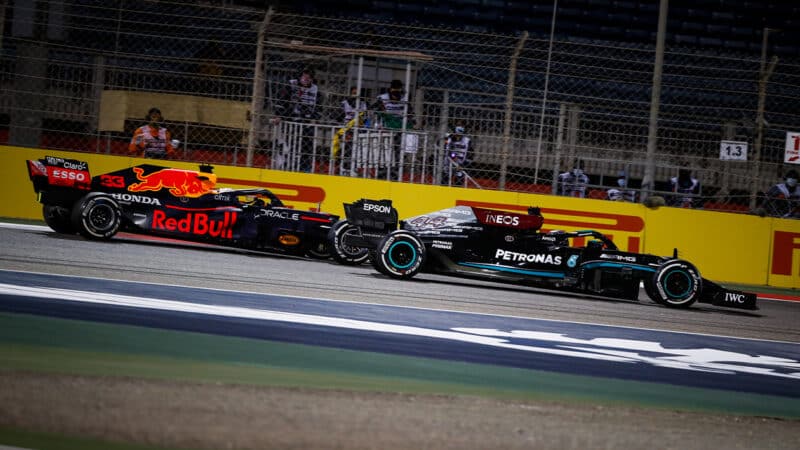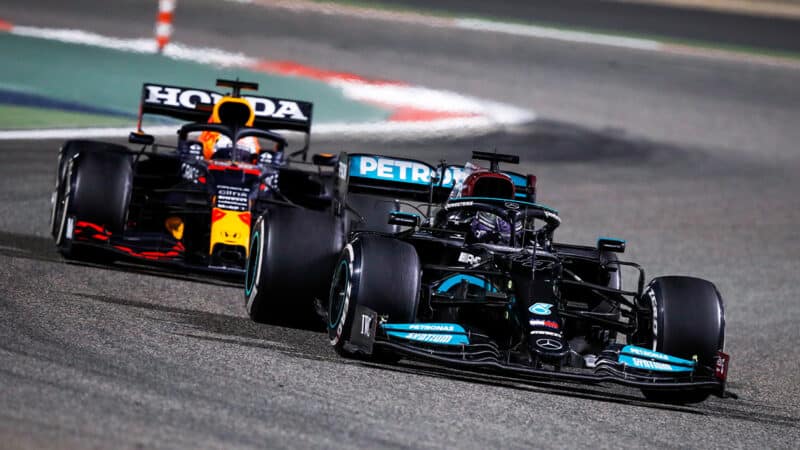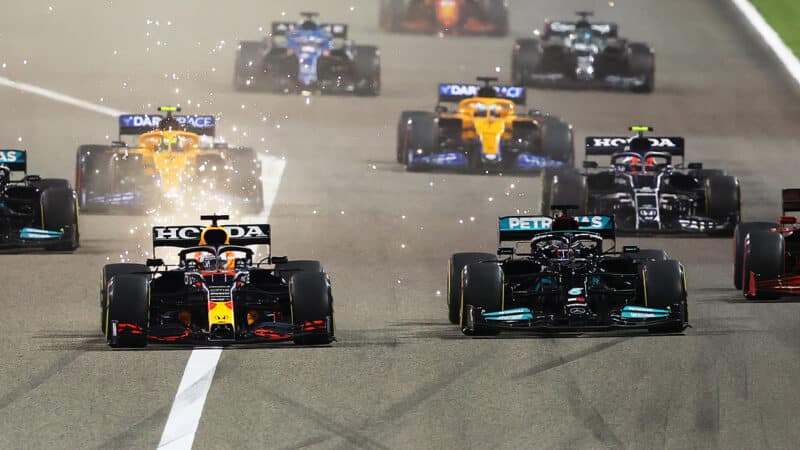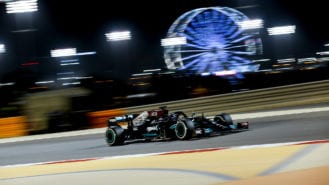Verstappen led away and set a pace at which his tyres could live long enough for a standard two-stop race, Hamilton hung on to him around 1.7-1.8sec back as they both pulled away from a pack led by the other Mercedes of Valtteri Bottas. It was expected they’d run this first stint for about 20 laps but Mercedes had a bold plan. It brought Hamilton in on lap 13 to undercut him past Verstappen. Although this would give Hamilton track position going into the next two stints, the final one was going to be very long, and the later-stopping Verstappen was going to have a big tyre advantage on this track with such high tyre deg.
Verstappen exited his final stop 8.8sec behind on tyres 11 laps newer and with 17 laps to go. With five laps left he was with him. As they came to lap Antonio Giovinazzi, Hamilton got a little pinned in on the approach to Turn 4 and Verstappen went around his outside. But critically, he ran out of road and completed the pass with all four wheels well off the track. He was told to hand the place back – which was more controversial than it might ordinarily have been because Hamilton had been off track there 29 times before being told by his team to respect the track limits. The race directors notes had said that, unlike in qualifying, track limits at Turn 4 would not be monitored ‘for lap time’. Hamilton took this as meaning he could run wide there so long as he didn’t gain or defend a position. No, his team told him, he must stay within the lines regardless.
Verstappen gave the place back but it seemed just a matter of time before he could make the move stick – except he then had a major oversteer moment out of Turn 13 as it was revealed that his chase of Hamilton in which he’d made up those 8.8sec had taken a heavy toll on his rear tyres. They had no more to give and Hamilton was off the hook for a win very much against the run of competitive play.

Verstappen had to concede the lead after running off track as he passed Hamilton
Florent Gooden / DPPI
Mercedes chief strategist James Vowles was ecstatic. “The emotion is – I hate to admit – more than anything I felt in the entirety of last year including winning the championship. I give up my life to travel the world and win races but to fight for it like we did today feels incredible. It wasn’t just strategy. Everything needs to come together perfectly, you need the tyre deg to actually cope with doing such long stints. You need the balance of the car and the set up to be right and frankly you need someone like Lewis behind the wheel who is able to deal with that.”
But they weren’t going to be able to keep doing this. It was a very specific set of circumstances which made it possible. Red Bull and Verstappen were coming. The clock to a new era was counting down and we had just this ’21 season as the crossover. Mercedes had ruled for seven years, now the momentum was slowing. Around this same track last weekend Verstappen took his 55th career victory. Yet it was amid a team being rocked to its foundations by the controversy around team principal Christian Horner and the apparent power play which has followed. Incredible as it may seem, with Verstappen right in the middle of one of the most dominant streaks ever seen in F1, it’s even being seriously discussed that he may leave. It can’t be so, surely?
Just as Bahrain ’21 suggested the beginning of the end of the Mercedes era, was last week what the beginning of the end of the Red Bull era looks like? With continuing domination on track but the foundations cracking beneath?



